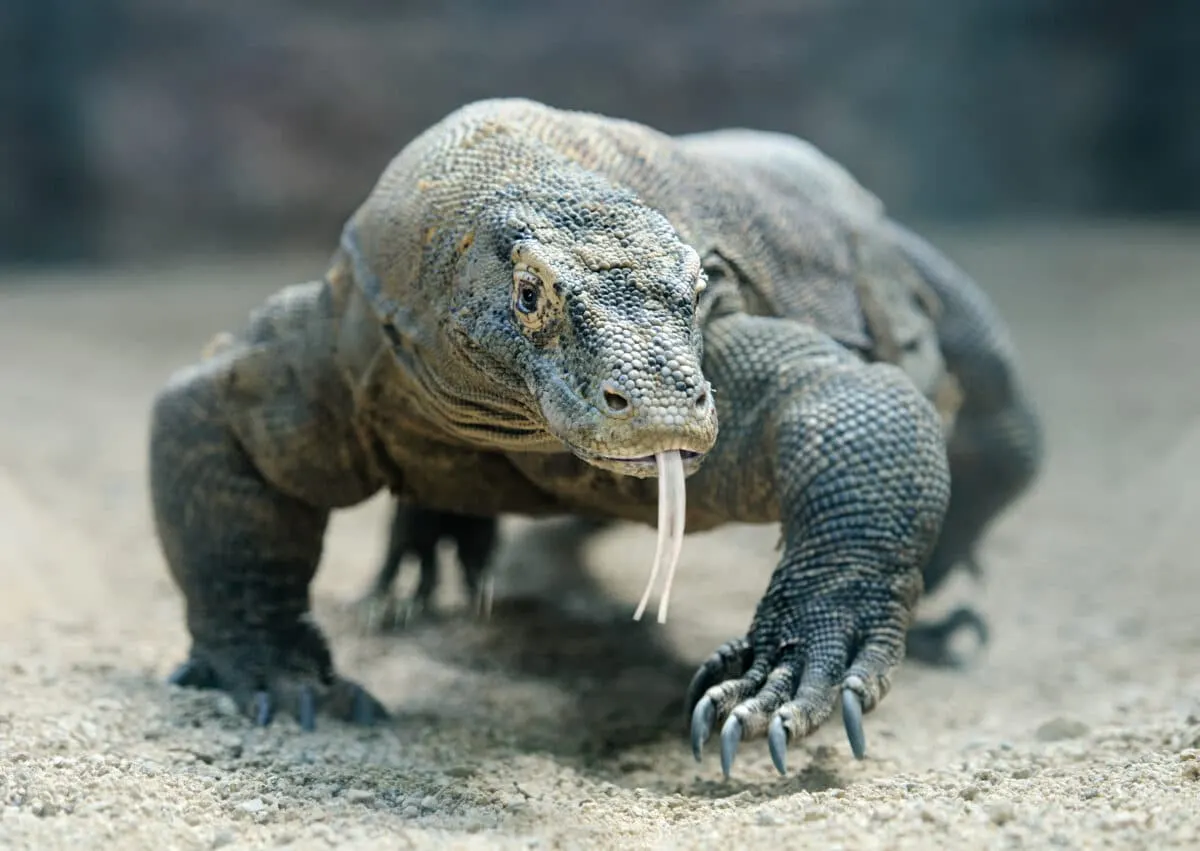Have you ever seen a Komodo Dragon eat a live bat? Keep reading and you will!
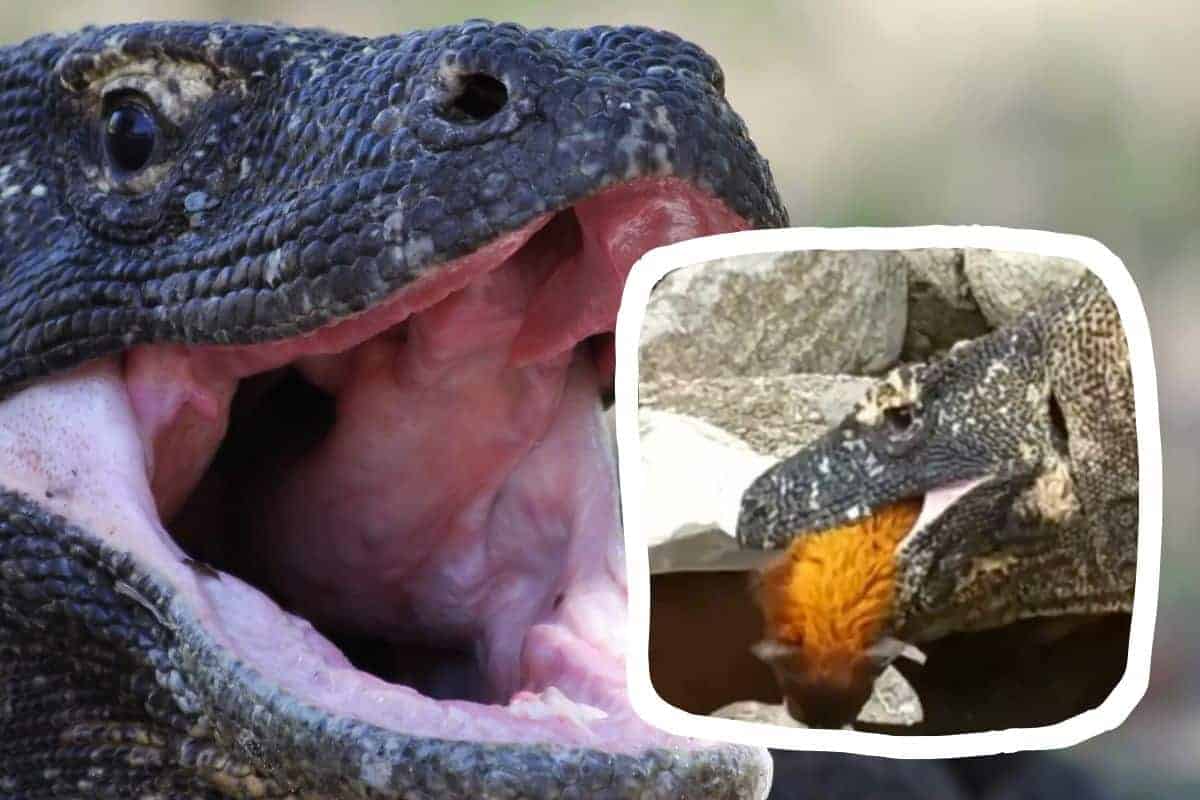
Komodo dragons, renowned as fearsome apex predators, possess a captivating and formidable diet. As carnivores, these incredible creatures exclusively feed on meat, showcasing their adaptability and opportunistic nature as hunters.
Their menu boasts a remarkable diversity of prey, demonstrated by their recent depiction in a video where a Komodo dragon is seen featsing on a live bat. From smaller mammals like rats, monkeys, and deer to birds, reptiles, and even their own species, these mighty reptiles exhibit an insatiable appetite.
Join us as we take a peek into the world of Komodo Dragons. We’ve outlined their diet and the many traits they possess to make them fierce hunters.
Key Points
- Komodo dragons have a diverse menu, including smaller mammals, birds, reptiles, and even cannibalizing their own species.
- Equipped with strong jaws and sharp teeth, Komodo dragons overpower and inflict severe injuries on their prey.
- The saliva of Komodo dragons contains bacteria aiding digestion and causing infections, incapacitating prey further.
- Komodo dragons’ predatory success is attributed to their size, strength, powerful bite, adaptability, stealth, and patient hunting strategies.
- The bite of a Komodo dragon is lethal due to sharp, serrated teeth, powerful jaw muscles, and toxic bacteria and venom present in their saliva.
An Overview of the Komodo Dragon
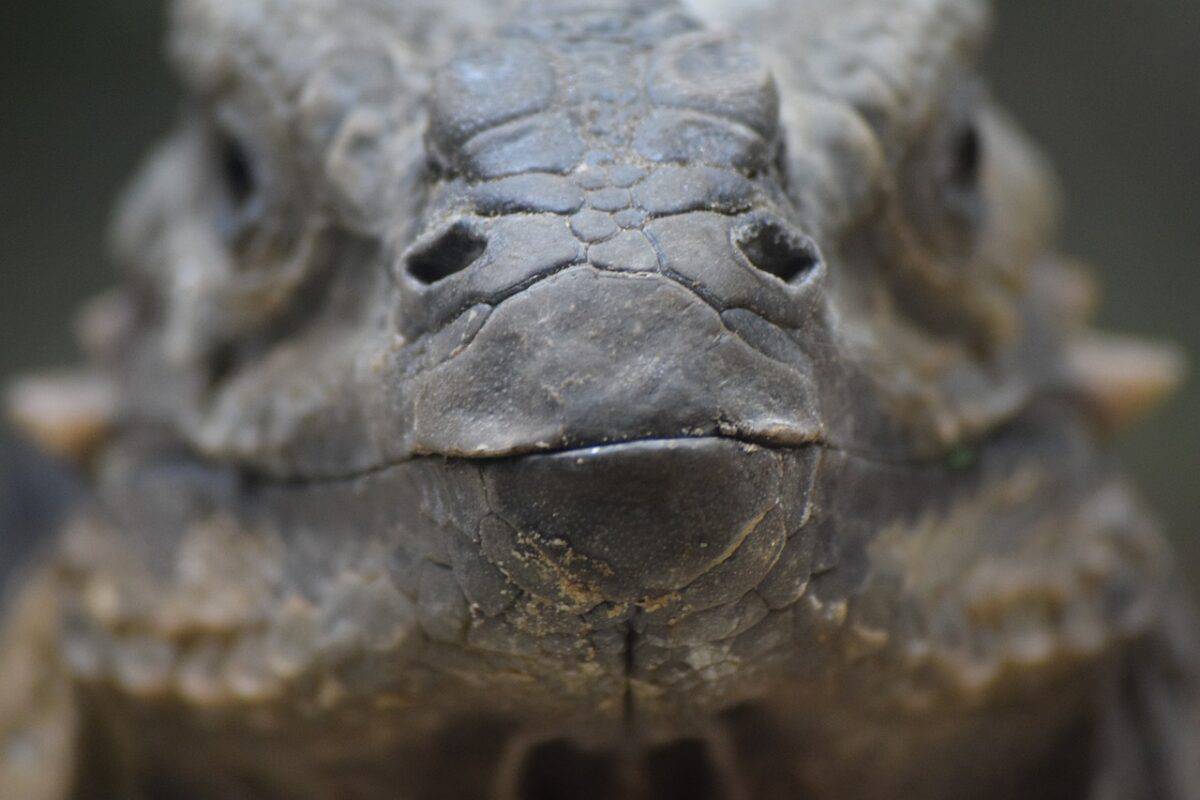
| Traits | |
|---|---|
| Length | Up to 10 feet (3.05 meters) |
| Weight | Up to 300 pounds (136 kilograms) |
| Diet | Carnivorous |
| Hunting Techniques | Ambush and stealth |
| Geographic Range | Komodo Island and surrounding islands in Indonesia |
| Habitat | Tropical forests, savannahs, and grasslands |
| Level of Danger to Humans | Potentially dangerous, but attacks on humans are rare |
| Lifespan | Up to 30 years in the wild |
| Conservation Status | Vulnerable (IUCN Red List) |
Footage: Komodo Dragon Eating a Live Bat
The video showcases the Komodo Dragon’s first and foremost weapon – its sharp and serrated teeth. They allow them to keep their prey in a firm grip, while also causing irreparable damage.
The Komodo Dragon’s Diet
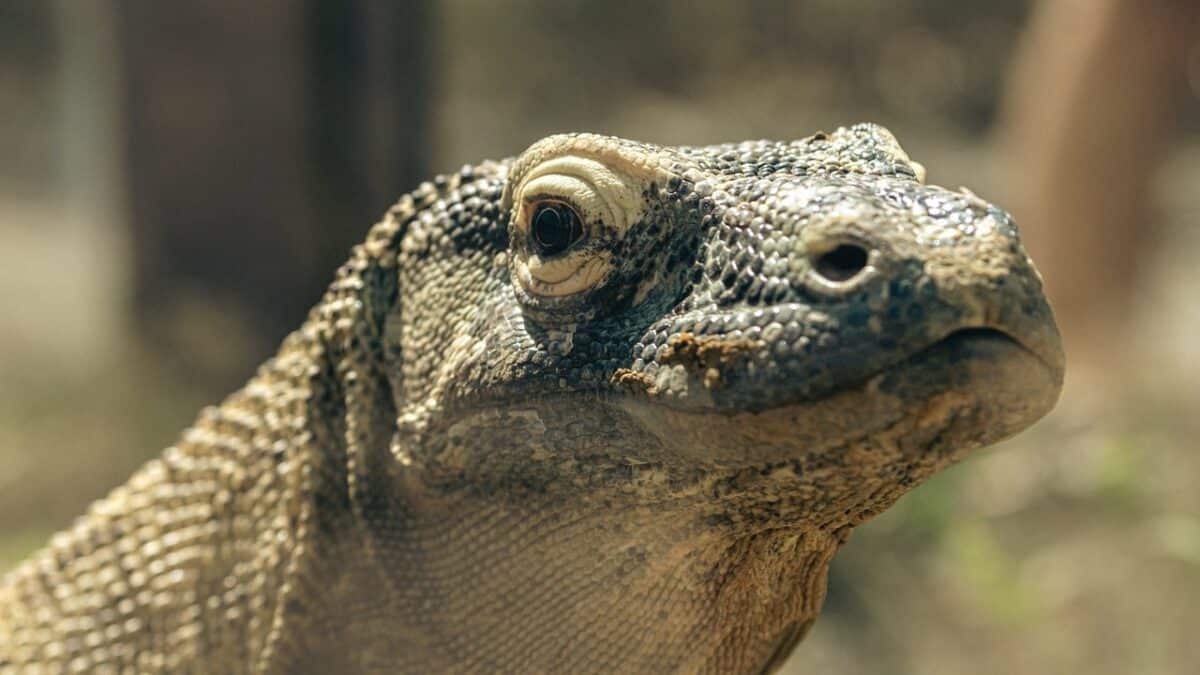
The Komodo dragon’s diet is both fascinating and fearsome. These creatures are carnivores, which means they have a diet that exclusively consists of meat. They possess a diverse menu, showcasing their adaptability and opportunistic nature as hunters.
Komodo dragons are known to prey on a particularly wide range of animals – they are the opposite of picky eaters, just like the footage of the Komodo Dragon eating a live bat shows. Their menu includes smaller mammals such as rats, monkeys, and deer, as well as birds and reptiles. No prey is too small or too large for these mighty reptiles. This predator even displays cannibalistic tendencies and doesn’t hesitate to munch on one of their own.
Equipped with strong jaws and sharp, serrated teeth, the Komodo dragon is well-prepared to overpower and devour its prey. Once they have located a potential meal, they unleash their powerful bite, inflicting severe injuries on their unfortunate victims.
Interestingly, the saliva of the Komodo dragon contains a potent mix of bacteria that aids in the digestion process. Additionally, these bacteria can cause infections in their prey, further incapacitating them. This unique adaptation allows the Komodo dragon to incapacitate larger prey and gives them an advantage during their hunt.
What Makes the Komodo Dragon a Great Predator?
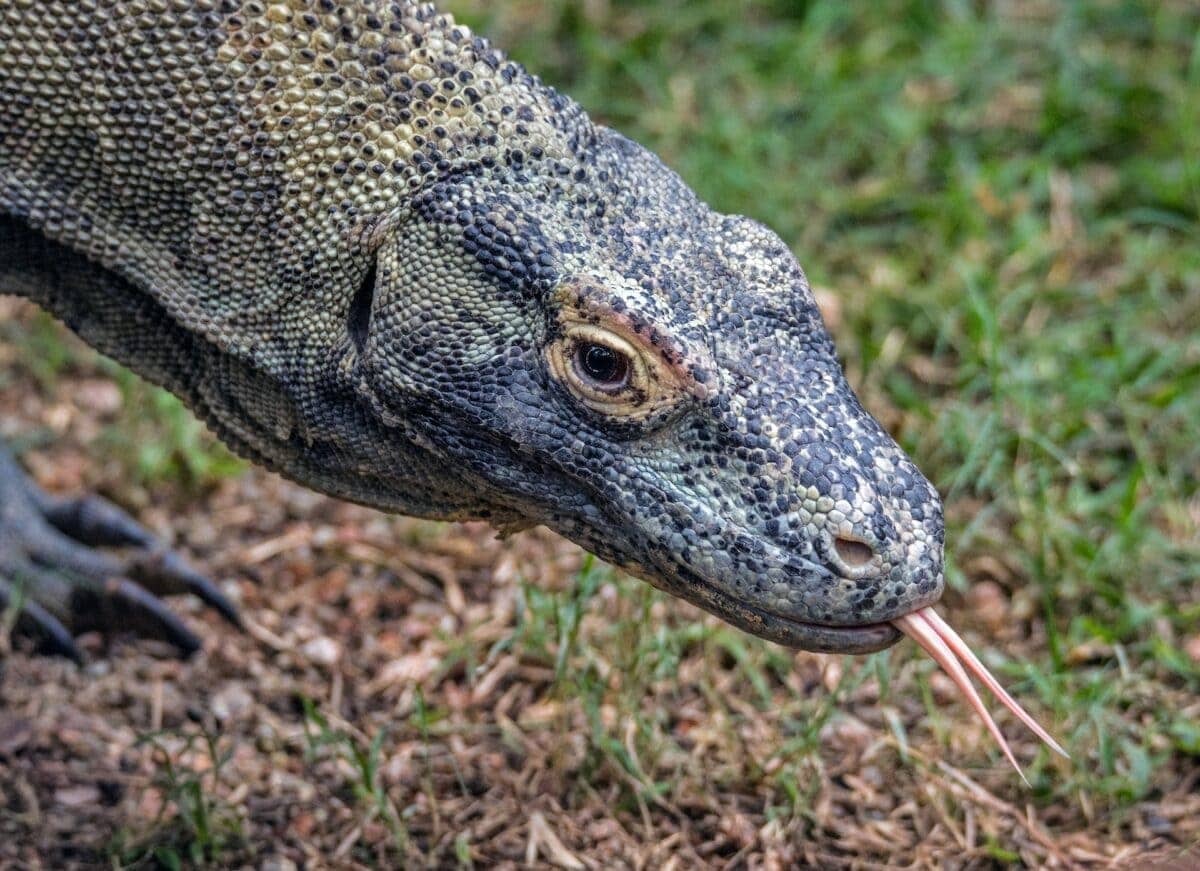
#1 Size and Strength
Komodo dragons are the largest lizards on Earth, capable of growing up to 10 feet (3.05 meters) in length and weighing up to 300 pounds (136 kilograms). Their large size and muscular bodies give them a significant advantage when it comes to overpowering prey.
#2 Powerful Bite
Komodo dragons possess strong jaws and sharp, serrated teeth that deliver a powerful bite. Their bite can cause severe injury, and their saliva contains harmful bacteria that aid in incapacitating their prey.
#3 Stealth and Camouflage
These creatures have excellent stealth capabilities, allowing them to remain concealed and blend seamlessly into their surroundings. Their earthy coloration and scaly skin help them go unnoticed by both prey and potential threats.
Also Read: The Most Impressive Displays of Animal Camouflage.
#4 Patient Hunters
Komodo dragons exhibit remarkable patience during hunting. They can wait for extended periods, staying motionless until the perfect moment to strike, increasing their chances of a successful ambush.
#5 Adaptability
Komodo dragons are opportunistic hunters and possess a diverse diet. They can prey on a wide range of animals, including smaller mammals, birds, reptiles, and even other Komodo dragons. Their adaptability contributes to their success as apex predators.
#6 Speed and Agility
Despite their size, Komodo dragons are surprisingly agile and can move swiftly when pursuing prey or defending themselves.
#7 Defensive Adaptations
Komodo dragons have evolved various defensive mechanisms. Their strong tail helps them maintain balance and fend off attackers, while their rough, scaly skin acts as armor, providing protection against teeth and claws.
#8 Excellent Sense of Smell
Komodo dragons possess a highly developed sense of smell, allowing them to detect prey from great distances. This acute sense helps them locate potential meals efficiently.
More on the Komodo Dragon’s Bite
The bite of a Komodo dragon is exceptionally lethal due to a combination of factors. Firstly, Komodo dragons have strong jaws equipped with sharp, serrated teeth that can deliver deep and devastating wounds to their prey. These teeth are adept at tearing flesh and causing severe damage.
The teeth of a Komodo dragon are specifically designed to inflict maximum damage. With sharp, serrated edges, their teeth are ideal for tearing through flesh and causing deep wounds. These serrations create a saw-like effect, allowing the teeth to slice through their prey effectively.
The shape and arrangement of their teeth maximize the gripping power, ensuring a firm hold on their victims. Combined with the powerful jaw muscles behind them, the design of their teeth enables the Komodo dragon to deliver devastating bites that incapacitate their prey swiftly and efficiently.
However, what makes the bite of a Komodo dragon truly deadly is the bacteria present in its saliva. Komodo dragons have a specialized gland in their bottom jaw that houses a toxic mix of bacteria. When they bite their prey, these bacteria are introduced into the wound.
The combination of the powerful bite and the toxic bacteria in the Komodo Dragon’s saliva makes it so lethal. The wounds inflicted by their bite not only cause immediate damage but also increase the risk of severe infection, making it extremely difficult for their prey to escape their grasp.
Are Komodo Dragons Venomous?
Yes, the bite of a Komodo dragon is venomous. For many years, it was believed that the deadly effects of a Komodo dragon’s bite were due to bacteria in its saliva. However, research conducted in the early 21st century revealed that Komodo dragons, like some snakes, actually produce venom.
The venom of a Komodo dragon contains a mix of toxins that can cause a significant drop in blood pressure, induce shock, prevent clotting, and cause severe pain. This venom is delivered through grooves in the lower jaw when the dragon bites its prey. Combined with the size and strength of the Komodo dragon, its venom makes it an even more formidable predator.
Can Komodo Dragons Kill Humans?
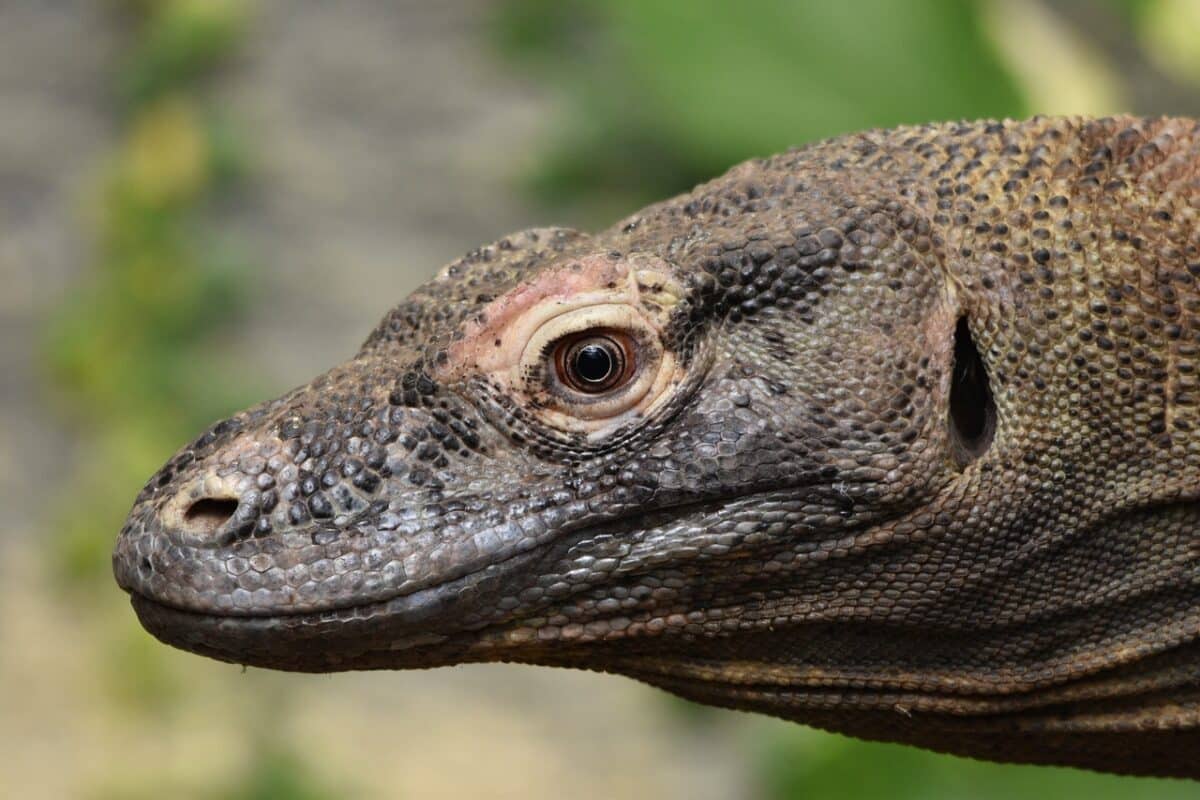
While rare, there have been instances where Komodo dragons have attacked and killed humans. These incidents, though infrequent, serve as a reminder of the potential danger posed by these powerful reptiles.
Komodo dragons are large, powerful predators with sharp teeth and a strong bite. If you were to encounter a Komodo dragon in close proximity, and if the dragon felt threatened or provoked, it could potentially attack.
However, it’s important to note that such attacks are uncommon, and Komodo dragons generally prefer to avoid human interaction. Human safety measures, including maintaining a safe distance and following guidelines in Komodo dragon habitats, can help minimize the risk of such encounters and ensure coexistence between us and these remarkable creatures.
Learn more about the deadly death adder bite here.
FAQs
The bite force of a Komodo dragon is estimated to be around 600 pounds per square inch (psi), which is significantly powerful compared to other predators of its size.
Fatal Komodo dragon attacks on humans are sporadic. In the last 50 years, there have only been 5 deaths reported. The primary reason for this very low number is the small geographic range of Komodo dragons – most of which are protected animal reserves.
While the bite of a Komodo dragon is incredibly powerful and can cause severe injuries, some animals have been known to survive the attack. However, the risk of infection from the bacteria in the Komodo dragon’s saliva poses a significant threat to the survival of the bitten animal.
Wrapping Up
In conclusion, the Komodo dragon’s diet and predatory abilities are both fascinating and fearsome. These apex predators showcase adaptability, opportunism, and a wide range of hunting strategies. Their size and powerful bite are what make them especially formidable hunters.
Despite their fearsome reputation, it is important to remember that Komodo dragons play a significant role in the ecosystem. As top predators, they help regulate populations of prey species, contributing to the balance and health of their habitat. Their presence influences the dynamics of the food chain and promotes biodiversity.
While it is true that Komodo dragons have the potential to be dangerous to humans, such incidents are rare. By respecting their natural behavior, following safety guidelines, and maintaining a safe distance, we can ensure peaceful coexistence and appreciate these remarkable creatures from a respectful distance.
Thank you for reading this article about a Komodo dragon eating a live bat! Keep learning about the wonders of nature and read about a seal pup that takes a surfboard for a spin, boaters that survive a killer whale attack, or crafty baboons that outwit lions.
- Cat Scares Coyotes and Saves Her Dog Sister From an Attack - May 7, 2024
- Pet Panther Jumps Into Bed To Get Cuddles - May 7, 2024
- Full-Grown Lion Hangs Out In Living Room Like a Normal Pet Cat - May 7, 2024

